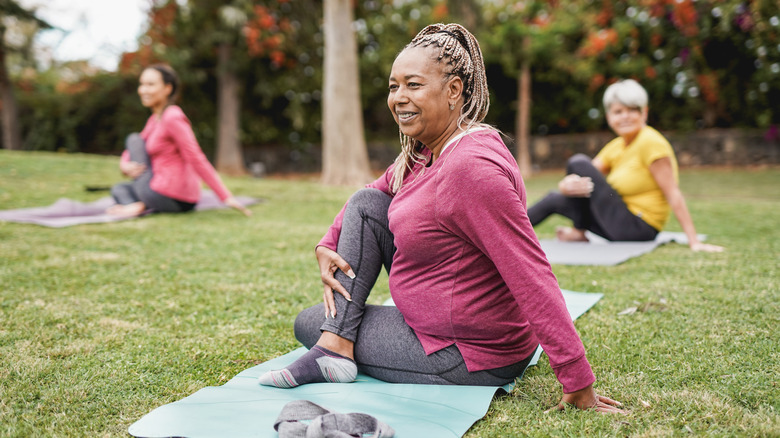How Exercise Affects Your Bladder
The bladder is a vital part of the urinary system, according to the Cleveland Clinic. This system, which also includes the kidneys, ureters, and urethra, performs the vital function of filtering the blood to remove waste and excess water in the form of urine. The bladder's job in this process is to collect urine and then release it from the body once it is full.
When we think about exercise, we don't often consider our bladders, but U.S. News and World Report suggests that perhaps we should. According to Dr. S. Adam Ramin, exercise is a great way to keep the bladder healthy. It is also surprisingly helpful for conditions, such as urinary incontinence.
The key to better bladder health? It all lies in the type of exercises that you choose. Dr. Ramin says you'll want to engage in low-impact exercises in order to reduce your leaky bladder symptoms and improve your overall bladder health.
Exercising to help your bladder
Women's Health states that while you might be hesitant to exercise if you have bladder control issues, not exercising can make your problem worse. Not getting enough exercise can contribute to weight gain, which places more pressure on weak pelvic floor muscles.
Instead, experts suggest staying away from high-impact exercises like running or weight lifting, which can trigger symptoms — opt for low-impact activities, like yoga or pilates, instead.
Dr. Ramin explains in U.S. News and World Report that the goal is to strengthen the core, elongate the spine, and strengthen the chest. This will reduce pressure on the bladder and improve symptoms.
While it isn't something that you need a gym membership for, you can also try doing Kegel exercises, says the Mayo Clinic. Kegel exercises directly work the pelvic floor muscles that support the bladder. To do them, try stopping your urine midstream so you can understand where the muscles are. You can also try pretending that you are sitting on a marble and trying to lift the marble with your pelvic floor muscles. Experts recommend contracting the muscles for a count of three and then relaxing them for another count of three. You should shoot for doing the exercises at least three times a day for 10 to 15 repetitions.


